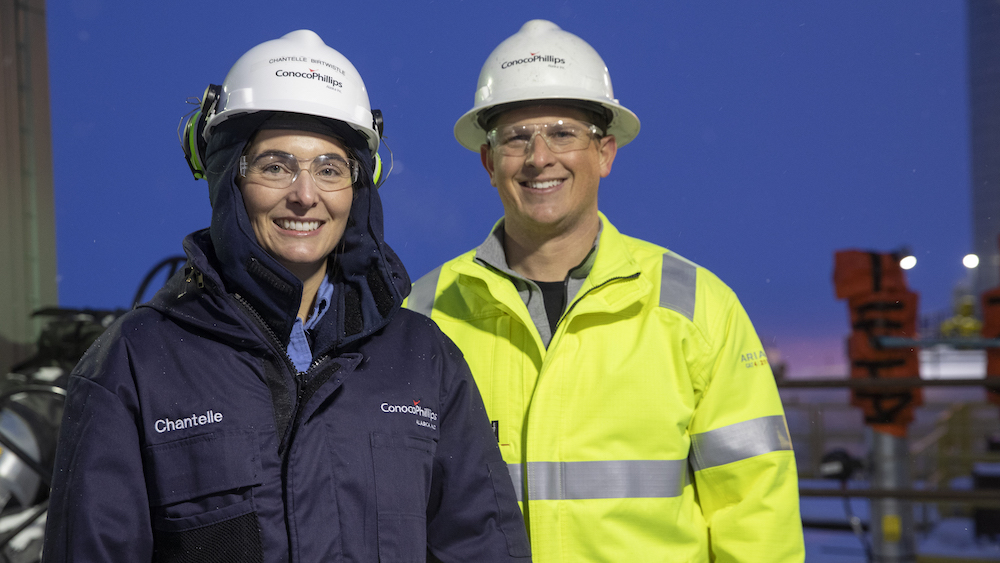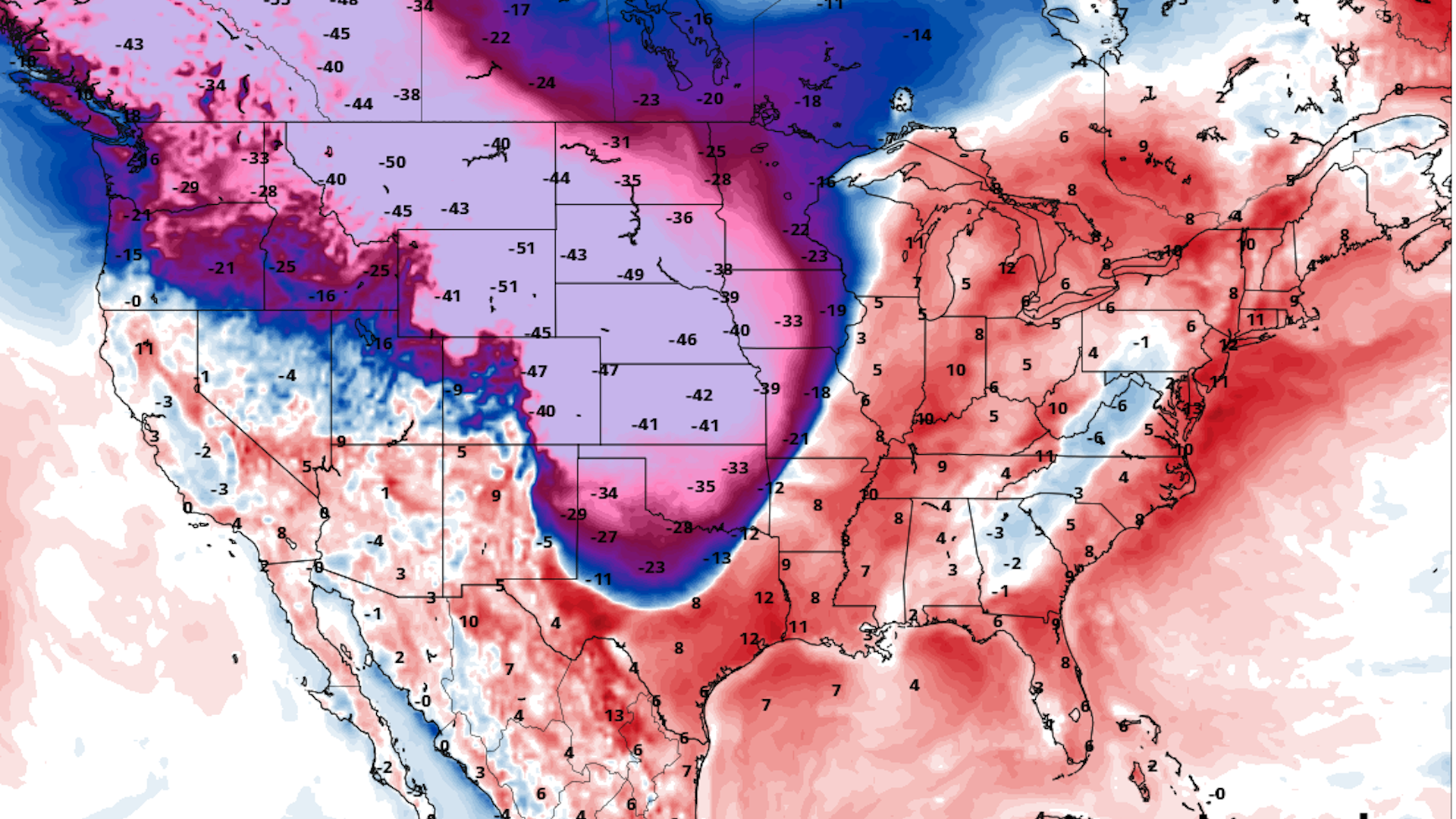| | | | | | | Presented By ConocoPhillips | | | | Axios Generate | | By Ben Geman and Andrew Freedman · Dec 19, 2022 | | 👋 Welcome back, readers! Today's newsletter has a Smart Brevity count of 1,107 words, 4.5 minutes. 👀 Attention Hill staffers: Axios Pro: Policy is our radical new approach to policy reporting. Sign up to secure heavily discounted pricing for your office. 🎶 At this moment in 1974, Rufus and Chaka Khan were #1 on Billboard's soul charts with a slice of funk brilliance that's today's intro tune... | | | | | | 1 big thing: Extreme winter spells trouble for food insecure |  | | | Illustration: Sarah Grillo/Axios | | | | A hunger crisis is deepening for food-insecure U.S. households as they face the fallout of a recent severe winter storm and extreme cold weather conditions likely in the weeks to come. Driving the news: Food insecurity is already a critical problem affecting millions of Americans. Multiple experts tell Axios' Ayurella Horn-Muller that the escalating burden of extreme winter weather, compounded with higher food prices, is cause for concern. The big picture: People of color, those with disabilities and unhoused populations are most impacted by food insecurity in the U.S., according to Zia Mehrabi, an assistant professor at the University of Colorado Boulder. - Mehrabi, who researches food security and climate change, tells Axios in an email that extreme events exacerbated by the warming world will continue to stress food prices — which have surged in the past year — and deepen existing burdens for these groups.
- "Food insecurity is really a problem of poverty [and] limited access. And those who are most poor are also those who have the least resources to respond and recover from these storms when they hit," says Mehrabi.
Zoom in: Last year, more than 33 million Americans lived in food-insecure households, according to the USDA. - Melissa Spiesman, COO of the nonprofit Food Rescue US, tells Axios that many agencies that serve the food insecure were closed during the pandemic and have not reopened since.
- "So, a lot of the resources that were in place before the pandemic, never really reemerged afterwards," says Spiesman.
- Extreme weather impacts will financially strain already food-insecure families, while pushing low-income households on the brink into becoming food insecure, according to Spiesman.
- "When you're just on the verge of it, everything is fragile and everything has an impact."
The intrigue: Conditions brought on by the winter storm and looming cold snap could mean subsequent impacts in the winter wheat zone, says Felippe Reis, a crop analyst at EarthDaily Analytics. Yes, but: "You can produce a great crop. That doesn't mean people are going to be food secure," Corey Lesk, a climate scientist and research associate at Dartmouth College, tells Axios. - "In the United States, the food security problem is more of a social problem."
Read the whole story |     | | | | | | 2. Breaking: A new global pact on nature |  | | | Illustration: Annelise Capossela/Axios | | | | A United Nations summit yielded a global deal on conservation and biodiversity that aims to protect huge swaths of lands and oceans while boosting finance to help meet the targets, Ben writes. Why it matters: The deal struck in Montreal early Monday came on a parallel track to the higher-profile UN climate talks, but there's connective tissue. Climate change is among the greatest threats to biodiversity. And new wilderness protection efforts could stymie some energy and mining projects. Zoom in: Top lines of the deal include... - Ensuring that 30% of combined lands and waters are "effectively conserved" by 2030. "Currently, 17% of terrestrial and 10% of marine areas are protected," AP notes.
- Bring the loss of areas of "high biodiversity importance" to "close to zero" by 2030.
- Mobilizing at least $200 billion annually from public and private sources to implement biodiversity strategies and plans.
- Boosting finance from developed to developing nations to at least $30 billion annually by 2030.
Yes, but: Targets are just targets! There's no guarantee they'll be transformed into tangible steps. Summit documents...Washington Post coverage |     | | | | | | 3. Musk drama reaches fever pitch as Tesla investors fret |  Data: Yahoo! Finance; Chart: Axios Visuals Some major Tesla investors are growing increasingly vocal about concerns CEO Elon Musk's rocky gig as Twitter's boss is hurting the electric automaker, Ben writes. What we're watching: Last night Musk launched a Twitter poll asking if he should step down as CEO of the platform. The (online) people have spoken and want him out. The big picture: Musk's "nightmare" stretch as Twitter CEO, Wedbush Securities' Dan Ives said, has been a "major overhang on Tesla's stock which continues to suffer in a brutal way since the Twitter soap opera began with brand deterioration related to Musk a real issue." - If Musk abides by the poll, it would be a "major positive for Tesla's stock starting to slowly remove this albatross from the story," his note this morning adds.
- The automaker's stock is up in pre-market trading.
Catch up fast: Leo KoGuan, reportedly the third-largest individual shareholder, tweeted last week that "Elon abandoned Tesla and Tesla has no working CEO." Ross Gerber tweeted Friday afternoon that he loves Tesla and supports Musk but he's "not ok with the way things are going down." Gerber's running for a board seat and looking to rally support. |     | | | | | | A message from ConocoPhillips | | The Willow Project | | |  | | | | ConocoPhillips is working with Alaskans to ensure the Willow project is a strong example of an environmentally and socially responsible development. Willow offers extensive public benefits, including local revenues to support Alaska Native communities. Learn more. | | | | | | 4. Polar vortex to challenge grids and holiday travel |  | | | Computer model projection showing frigid air spilling southeast Thursday. Image: Pivotal Weather. | | | | A frigid air mass associated with the polar vortex in the lower atmosphere will send temperatures plunging across the Lower 48 this week, Andrew writes. Why it matters: The cold will increase heating demand at a time of tight supplies for natural gas and heating oil and could test grid reliability in some states. The big picture: The Arctic blast is now sliding south into the Dakotas, northern Rockies and High Plains, and it will slowly creep southeast from there. - By the end of the week, 55 million Americans are forecast to see temperatures dip below 0°F, according to NOAA.
- Associated with the cold, late this week, a powerful storm is likely to form that could bring pre-Christmas travel to a standstill across the Midwest, Ohio Valley and East Coast.
- Heavy, wind-whipped snow is possible across the Ohio Valley and Midwest, while a soaking rain is likely for the East Coast.
Context: While some cold records will be broken, winter is the fastest-warming season in many states. This, plus colder outbreaks during December in the 1980s, will make all-time records hard to set. Threat level: The frigid air will make it all the way to the Gulf Coast, with temperatures in the teens forecast in Texas and Louisiana by late this week. Read more |     | | | | | | 5. 🛢️Catch up fast on oil: shareholders, Chevron | | The shareholder advocacy group Follow This just unveiled new resolutions aimed at forcing Exxon, Shell, BP and Chevron to act more aggressively on climate change, Ben writes. - Driving the news: Follow This says it has backing from investors with over $1.3 trillion under management, though Bloomberg notes that they nonetheless hold just a tiny slice of the majors. The FT has more.
- Why it matters: While investor campaigns aimed at forcing oil giants to change strategies often fail, sometimes they don't. And the campaigns, even unsuccessful ones, put a spotlight on advocates' criticisms of industry emissions policies and the majors' counterarguments.
Elsewhere on our oil radar... 💰"Chevron has led a $318 million fundraising round for Canada-based Svante, which develops filters to capture industrial carbon emissions for storage or reuse." (Reuters) |     | | | | | | A message from ConocoPhillips | | Advancing Alaska's economic and energy future | | |  | | | | The Willow project combines state-of-the-art technology and a strong commitment to environmental stewardship. The benefits: It will produce much needed domestic energy and create jobs for skilled union labor. We are proud to produce the energy America needs. Learn more. | | | | 📬 Did a friend send you this newsletter? Welcome, please sign up. 🙏 Thanks to Mickey Meece and David Nather for edits to today's newsletter. We'll see you back here tomorrow! |  | | Your personal policy analyst is here. | | | | | | Axios thanks our partners for supporting our newsletters. If you're interested in advertising, learn more here.
Sponsorship has no influence on editorial content. Axios, 3100 Clarendon Blvd, Arlington VA 22201 | | | You received this email because you signed up for newsletters from Axios.
Change your preferences or unsubscribe here. | | | Was this email forwarded to you?
Sign up now to get Axios in your inbox. | | | | Follow Axios on social media:    | | | | | |









No comments:
Post a Comment